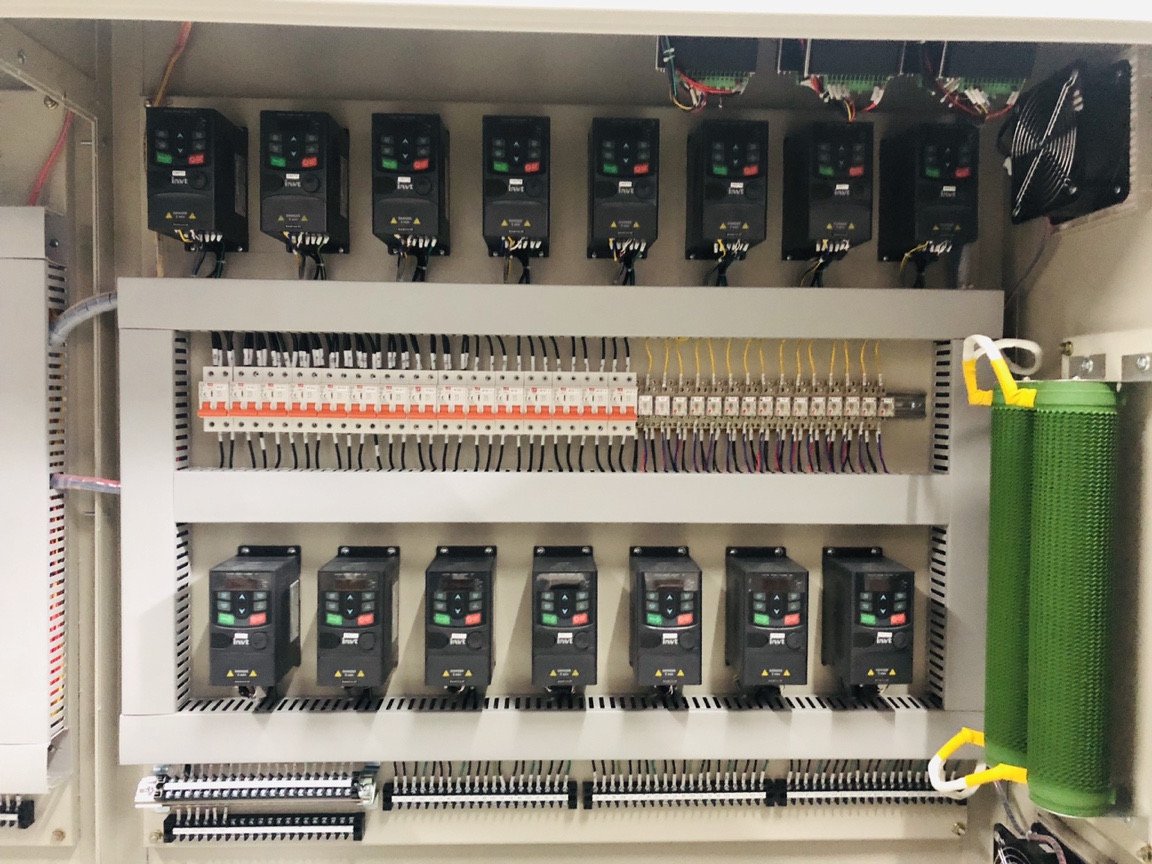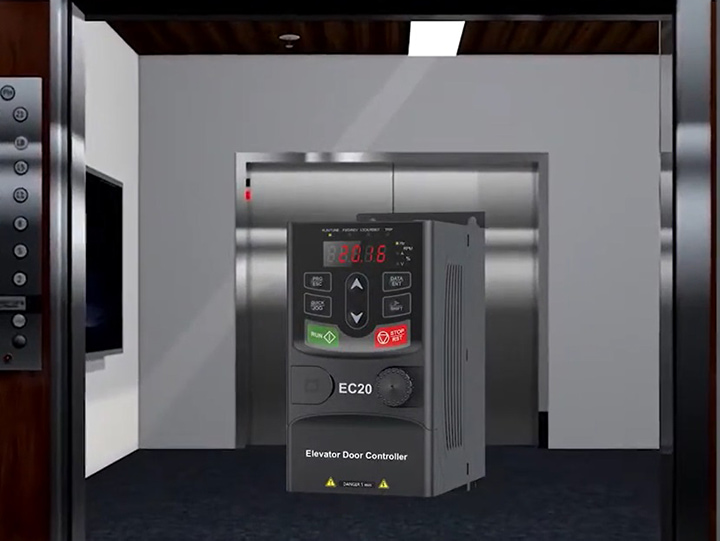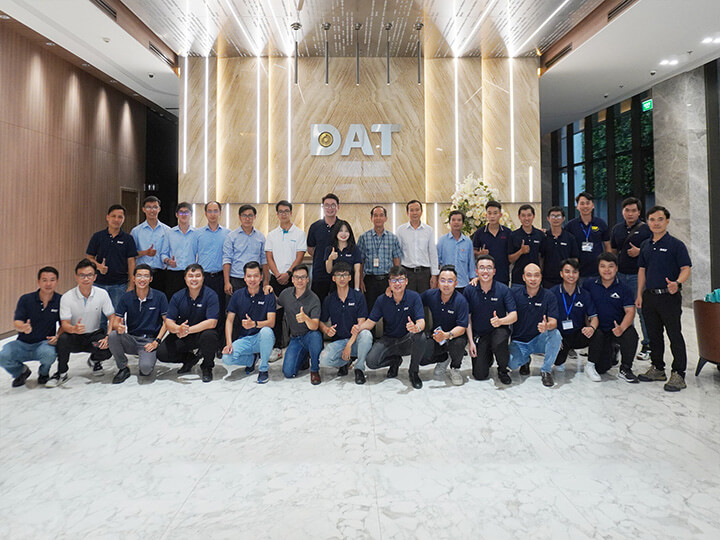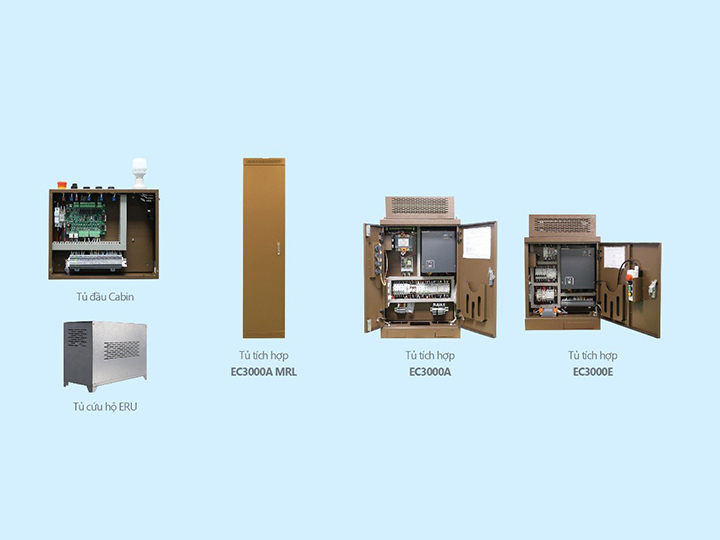Some energy-saving solutions in Electronics Manufacturing Workshop
With goal of promoting efficient and economical electricity usage at Electronics Manufacturing Workshop (EMW), aiming to achieve at least a 10% reduction in annual electricity costs to lower production expenses and product costs. In recent times, EMW under Central Power Information Technology Company (CPCIT) has placed special emphasis on energy-saving solutions in production of electronic meters, yielding promising results.
Energy-saving in lighting
Redesigning lighting system within workshop premises for certain areas, by dividing lighting zones into smaller sections, allowing for individual control of light bulbs, adjusting brightness levels, and installing reflective light fixtures to focus light where needed.
Lights should only be turned on when necessary, illuminating only work areas and positions with active personnel, maximizing natural light and ventilation, and reducing light usage when the number of personnel decreases. Implementing a well-designed shared lighting system.
Replacing and repairing lighting systems with high-efficiency light bulbs.
Reducing at least 50% of electricity consumption for general lighting in hallways, outdoor areas, gardens, and fences; only activating protective lighting at truly essential locations.
Eliminating unnecessary general lighting in office areas, hallways, outdoor spaces, and workshop perimeter.
Energy-saving in air conditioning usage
Only use air conditioning when necessary and set cooling temperature to 27°C or higher, turn off air conditioning at least 30 minutes before work breaks. At this temperature, heat-generating devices such as soldering waves, reflow soldering machines, soldering irons, etc., consume less energy to heat up, resulting in significant energy savings for both air conditioning and equipment.
Schedule regular maintenance for air conditioning units to clean accumulated dust on condenser, evaporator, filters, etc., which can hinder heat exchange and lead to slow cooling and increased energy consumption.
Air conditioning units used in workshop should be turned off during lunch breaks, mid-shift breaks, and at the end of the work shift.
Install temperature sensors to alert if temperature falls below prescribed limit.
Establish a temperature adjustment schedule based on time periods: set lower temperatures during noon hours, higher temperatures in morning and afternoon. Turn off some air conditioning units in evening and during winter.
Utilize natural ventilation fans for cooling to reduce need for air conditioning and save energy.
Energy-saving in production operations
Implement innovative installation of new electrically-heated chip drying cabinets (2,000 W) to replace high-wattage circular light bulb cabinets (3,800 W), saving 50% of electricity consumption and reducing printed circuit board drying time by one-third.
Apply energy-saving measures and monitor electricity usage, such as installing variable frequency drives for motors, pumps, and compressors. Enhance energy management for SMT department and extend this approach throughout workshop to monitor and manage energy usage, implementing measures to regulate energy consumption.
Set electric soldering iron to 330°C. Turn it on only 5 minutes before use and turn it off immediately after work shifts, lunch breaks, and periods of non-use. Properly turning off soldering iron will also reduce energy consumption for air conditioning.
Electric workbenches and aging workstations should only be turned on when needed and turned off if not used for 15 minutes. Regularly inspect and replace overheated wiring caused by insufficient gauge or short circuits, and install cooling fans for power sections to maintain system stability.
Switch off electrical switches for air compressors about 20 minutes before the end of the work shift. Conduct regular inspections of air system to prevent air leakage, which can lead to energy loss.
Electrical system of workshop should undergo regular inspections of wiring, switches, circuit breakers, and contact points for overheating due to short circuits or electrical leakage, ensuring minimal energy loss.
Turn off all unnecessary electrical devices when leaving room and at the end of work hours, completely switch off power for devices such as computers, printers, photocopiers, scanners, ventilation fans, and meter test benches.
Restrict operation of high-energy-consuming machinery and equipment during peak hours.
Optimize production processes in certain stages to conserve energy
To minimize waiting time on production line, maximize equipment capacity, and reduce energy consumption. Workshop has organized efficient production layouts at certain stages of Automated Component Mounting (SMT) team to fully utilize capacity of machinery with high electricity consumption, combined with solutions such as reducing time soldering machine is on from 3 hours to 1 hour and 45 minutes while maintaining required temperature for production.
Create an “Optimization Plan for Production and Energy Saving in Electronics Manufacturing Workshop” to present to company leadership for purpose of conserving energy during production process.
Strengthen communication and advocacy efforts regarding energy-efficient use
Instill a sense of energy-saving responsibility in each employee, implementing energy conservation measures rigorously. Every employee must serve as a role model for energy conservation within workplace and at home, while actively promoting participation of family members and relatives in energy-saving program.
Propose issuance of a “Regulation on Energy Conservation in Electronics Manufacturing Workshop” by company leadership, mandating that all employees are aware of and voluntarily adhere to energy-saving practices, fostering energy-saving awareness, responsibility, and ensuring long-term and stable energy conservation.
According to cpc.vn














